Parque Tayrona is a place on Colombia’s coast which is spoken about with reverence.
Tayrona National Park is widely considered to be one of the country’s must-see locations; a huge stretch of protected land comprised of a unique mix of sand, sea, mountain and rainforest, with huge boulders littering empty stretches of beach and tall palm trees fluttering in the sea breeze.
So it’s difficult to reconcile my feelings about Tayrona. After two nights and three days at the park, I can say with a heavy heart that I really didn’t love the place that much.
Read more: Everything I Know About Backpacking Colombia
I know. You think I’m mad. Just look at that landscape, right?!
But here’s the thing: Tayrona has long been marketing the idea that the park is the most magical and unreal place a tourist is likely to visit. Now that the Colombian tourist board have changed the country’s slogan to “magical realism” it’s even more prominent – when someone comes to Colombia, they expect magic to be present wherever they go.
And sadly, Tayrona isn’t quite magical enough.
The pricy truth about Parque Tayrona
Parque Tayrona is billed as an escape for nature lovers, hikers and sunbathers alike, with abandoned beaches, larger-than-life boulders and empty jungle just begging to be explored.
So you’d expect the atmosphere to reflect this sense of emptiness and serenity – sleeping cheaply in hammocks, relaxing on the sand, drinking freshly squeezed juices bought from a single vendor wandering along the beach… and paying a price to match.
Instead, the people who work inside Tayrona National Park have a monopoly on how much money to charge – and they charge a lot, much to the surprise of the groups of tourists travelling through South America on a budget.
How to reach Parque Tayrona
Most backpackers in Colombia are either staying in Santa Marta or Taganga when they decide to visit Tayrona National Park. Riding the public bus from Santa Marta to Tayrona takes about an hour, costs 7,000 Colombian pesos and departs approx. every 30 mins from the Santa Marta terminal.
An alternative is to take a taxi from Santa Marta to Tayrona. While not the cheapest option at around 80,000 pesos, it’s worth considering if you have lots of heavy bags and have a group of four travellers willing to split the bill!
The bus pulls up at El Zaino, Tayrona National Park’s main entrance. This is where the costs begin.
At a little office, you pay the foreigner’s entrance fee of 30,000 Colombian pesos ($15.50/£9) and have a white wristband taped around your wrist. There’s a discounted fee for students but you’ll need a student ID as well as a passport to prove you’re under 25.
You walk a hundred metres to find a few white minivans and a cluster of Colombians waiting to drive you further into the park at a cost of 3,000 ($1.50/90p).
After twenty minutes they stop, and you start walking properly through Tayrona Park.
The hike to Arrecifes in Tayrona
This initial 3.2km hike through the park is usually the part which sounds most daunting to travellers thinking about visiting. The weather on the Caribbean coast is hot and humid enough to start with, but once you include a couple of backpacks filled with two days of drinking water under the midday sun, and the sweat quickly escalates.
Luckily, most hostels in Santa Marta are more than happy to store the bulk of your luggage while you’re in Tayrona Park.
Across wooden walkways, up boulders, along scorching sand, through dust-covered jungle and over multiple lines of giant ants busily carrying bits of leaves, you walk for about 45 minutes before reaching the first sign of civilisation: the Arrecifes camping site.
Where to stay in Tayrona National Park
There are three main options: staying in a hotel, camping in a tent, or sleeping in a hammock.
Budget: The cheapest campsite is a place called Don Pedro’s near the Arrecifes site, where a hammock will cost you 10,000 ($5/£3), while a tent for two is 25,000 ($13/£7.50).
It’s a pretty reasonable deal in theory, except many of the tents had holes and the hammocks don’t come with mosquito nets, so if you’re bite-susceptible then it’s worth dousing yourself liberally with mosquito repellent.
Average: The most popular campsite for travellers is Cabo de San Juan, a further 45 minute walk through the park. They charge 20,000 pesos ($10/£6) for a hammock – double the price of Don Pedro – and offers tents set up in rows that look more suited for a music festival than a ‘deserted’ coastline.
Luxury: At the top end of the scale is the EcoHabs resort, a collection of little straw roofed bungalows that cost around $300 a night. Needless to say we didn’t meet any backpackers staying there, but the Tayrona EcoHabs did look beautiful from the quick glimpse I had between the palm trees!
What to eat in Parque Tayrona
Once you’ve thrown down your bag and waited for the blood to drain away slightly from your sweating face, eating is probably next on the agenda. That, and drinking a lot of water.
But hang on! It turns out the food in Tayrona Park is ridiculously overpriced for Colombia.
In a country that commonly offers menu del dia plates for between 5,000 and 7,000 pesos ($2.50-$3.50/£1.50-£2), the idea of paying 15,000 ($8/£4.50) for a meal actually hurt my insides.
Plus this was at Don Pedro’s, the cheapest place we found; at any of the small tiendas located closer to Cabo de San Juan, the price of a standard plate of chicken, rice, plantain and salad was 25,000 pesos ($13/£7.50).
Luckily, the hostel mentality is alive and well for Colombia’s backpackers. Alongside Tayrona’s hammocks and tents, many people choose to bring food to cook in the park.
Except when you reach a campsite and have a look at the kitchen, you’ll understand why that’s probably not the best idea.
The outdoor kitchen at Don Pedro’s site consists of a few blackened pots and a metal grill across a stone surface to light fires on. While a lot of people are probably adept at doing that, I have no shame in saying that I barely know the first thing about laying and lighting a successful fire that’s going to keep burning long enough to cook pasta on.
We spent the week with an Australian couple who’d brought supplies they wanted to cook; eggs, tuna, a large bag of potatoes and two boxes of pasta. After their first evening in the kitchen, they appeared at the communal dining area where Josh and I were eating.
Apparently they hadn’t bargained for how much prep was involved. The task of collecting enough wood from the jungle to boil their potatoes (not to mention trying to avoid killing the live prawn happily floating in the sink) was enough to make them buy themselves dinner instead.
How to prepare for your Parque Tayrona visit
- DO bring water: absolutely crucial, unless you want to pay Tayrona’s hefty fees. A 750ml bottle of water costs around 4000 pesos ($2/£1.20) in the park, and you’ll be drinking a lot more than usual due to the heat. We carried in a weighty 12 litres between two people, which lasted over 48 hours.
- DON’T bring plastic bags of water: Tayrona National Park is a nature reserve so plastic isn’t allowed on site (although nobody checked that I’d brought various plastic items in). However, the cheapest way to buy water is in the big six litre bags, and a lot of tourists will carry these bags to the entrance of the park only to have them taken away. We bought a bag in Santa Marta then decanted it into a couple of bigger bottles instead.
- DO bring snack food: bags of crisps, fruit, and biscuits will go a long way.
- DON’T bring food to cook: or do so at your own risk. It’ll take hours with very limited resources and you might have to end up buying dinner anyway…
- DO bring money: there are no ATM facilities in the park, surprisingly enough, so bring enough cash to cover your stay.
- DON’T bring alcohol: it´s prohibited to bring alcohol into Tayrona Park – although you can still buy beers at the campsites for an extortionate price.
- DO bring suncream, a hat, mosquito repellent and toilet paper: pretty self explanatory. The sun in Tayrona is seriously strong, and although the guys running Don Pedro assured me there aren’t bugs, the bites on Josh’s leg said different. Also the campsite bathrooms often don’t provide toilet paper…
- DON’T bring much else: the walk into the park can be a killer, and within 10 minutes you’ll be acutely aware of how much you’ve put in your bag. If you can, leave the majority of your stuff at a Santa Marta hostel and just carry the basics: shorts, a few T-shirts, swimming costumes, a sarong, and something long-sleeved at night as there can be a bit of a chill.
The plus points of Parque Tayrona
Of course, all these details sound rather petulant when you’re re-reminded of your surroundings. Just look at those palm trees! That brooding sky! How can you complain about a few extra dollars a day when you get to chill out on those beaches?
For me, Tayrona was beautiful enough to spend a couple of days exploring.
Once we settled in, there was a particular atmosphere which was worth soaking up. We spent our evenings at crooked wooden tables playing cards, before looking at the time and deciding 9.30pm was getting rather late; then we’d retire to a hammock or a tent, wiping dirt from our feet and looking up at the stars through palm tree fronds.
The next morning we’d wake up to cockerels strutting around our tent, before walking twenty minutes through the jungle towards the beach. On the way we’d pass braying donkeys and patient horses nibbling at discarded coconut shells, and I’d look up occasionally to see a monkey swinging through the trees overhead.
But I don’t think these are the details which make Tayrona famous, and creating that kind of atmosphere is easily done in a vast amount of places. I guess I couldn’t really see what made Tayrona as special as it’s supposed to be.
So what’s so wrong with Parque Tayrona?
There’s a lot of hype surrounding Parque Tayrona which isn’t visible when you’re inside the park – except for the prices. An entrance fee, festival-like wristbands, and an attitude from a lot of people working there that screams “this place is worth a lot of money so we can charge whatever we feel like” – when actually they’d probably have a lot more business from the constant stream of backpackers if prices were more reasonable.
Maybe it wasn’t the best weather during our few days there. Maybe I’ve been spoiled with amazing beaches around the world. But lots of other travellers on the coast admitted the same confusion about their time at Tayrona to me – and everyone felt rather guilty saying it. While the park is a beautiful example of Colombian nature, it’s not untouched, it’s definitely not unspoiled, and it’s way overpriced.
In fact, the only thing I could imagine the tourist-paid money going towards was the construction of the wooden walkways dotted along the route from the entrance.
The beaches are nice enough, but a lot of them have deadly rip tides and currents that make it much too dangerous for swimming.
The ability for backpackers to come here and live cheaply, while certainly doable, is barely possible. You’ll be eating cold tins of tuna in the tent you’ve brought with you (though you’ll still have to pay to pitch it), while hoping your 10 litres of water that you carried for an hour in your backpack won’t run out before you want to leave.
Ultimately, Tayrona felt like it was teetering in between two opposing concepts: the mysterious, untouched idea of a Colombian paradise versus the prestige and money that accompanies being part of the tourism boom.
Maybe I visited Tayrona National Park too late in the game. Maybe it’s already changed irrevocably from the lost paradise it used to be. But if that’s the case, travellers and tourist boards alike would do well to change their marketing strategies, and accurately reflect what the park is like now.
Because at the moment, it’s a rather high price for paradise.

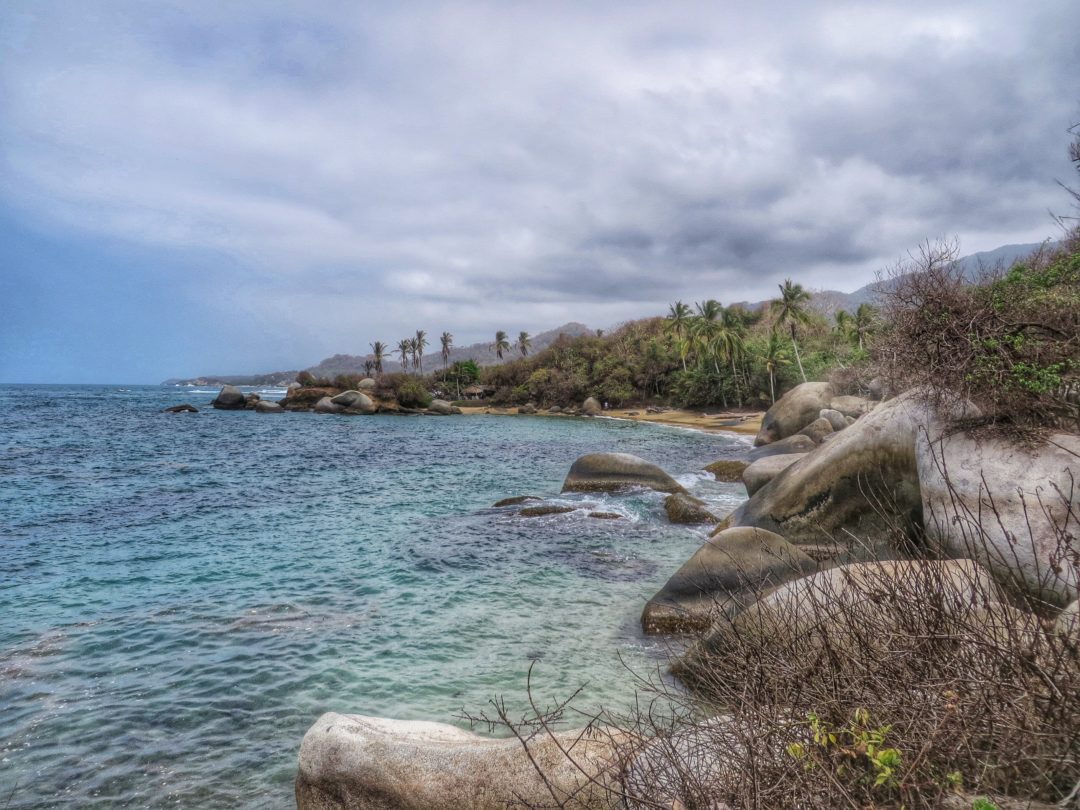

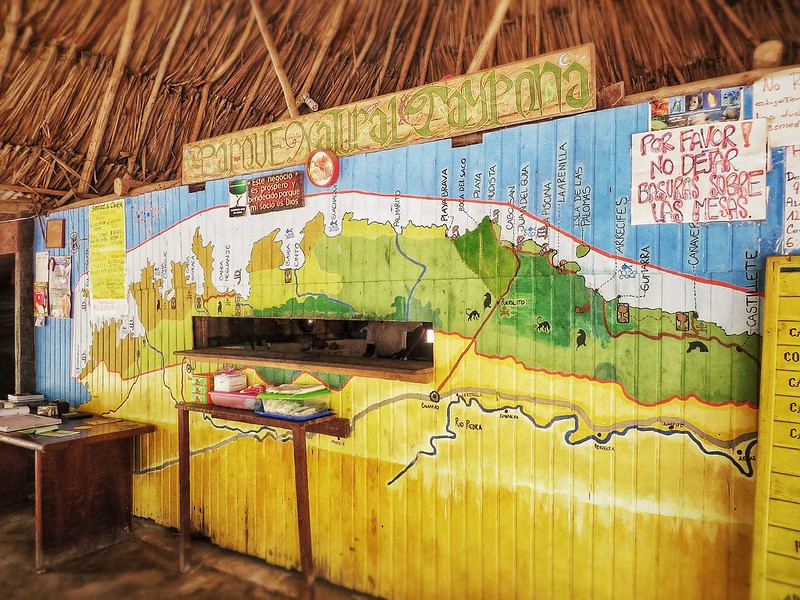
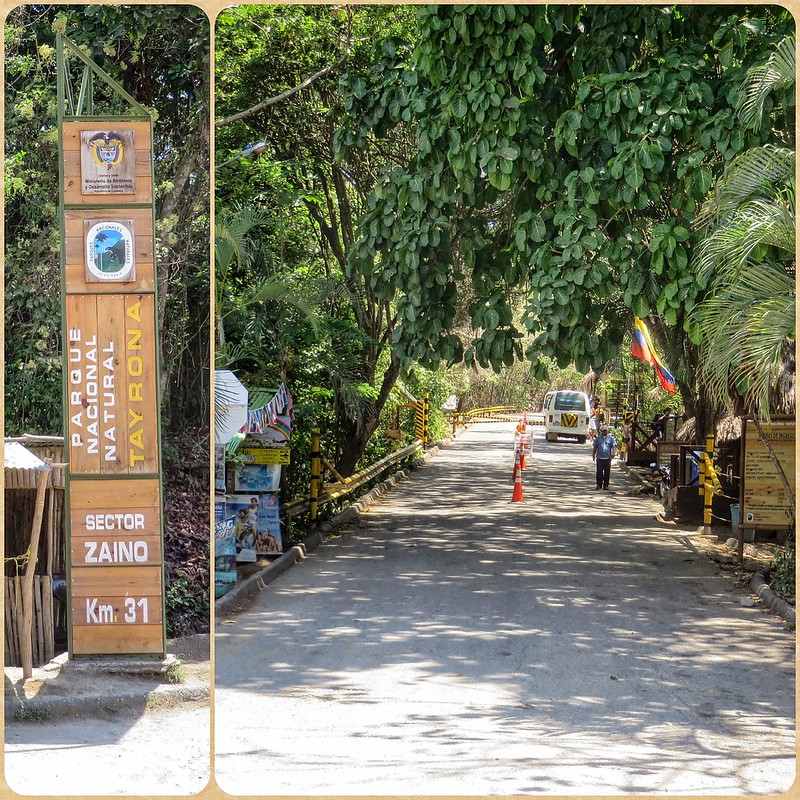
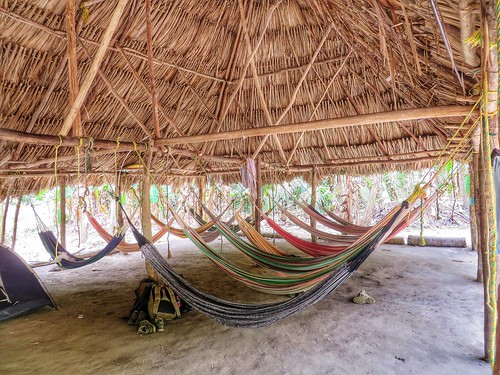
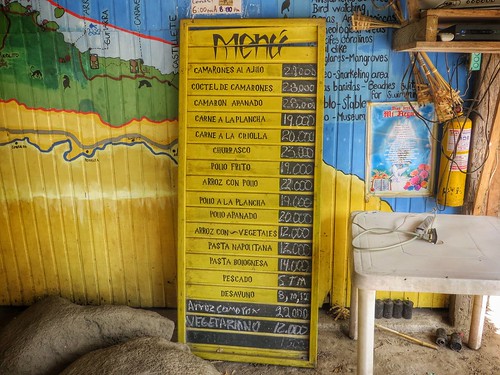
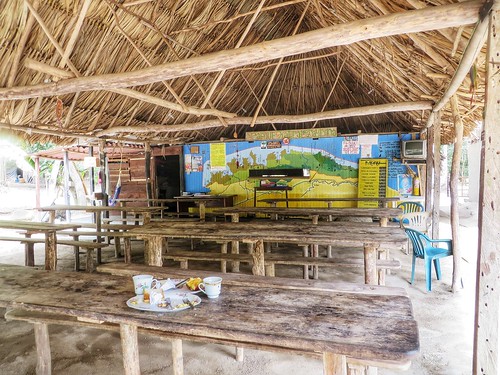
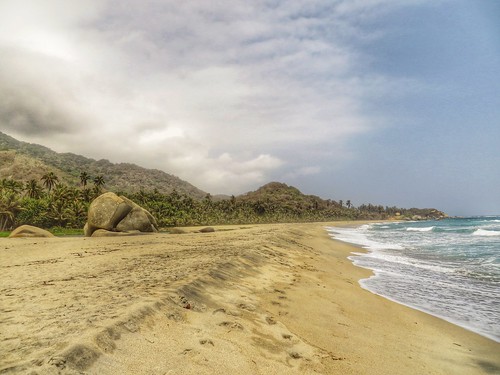
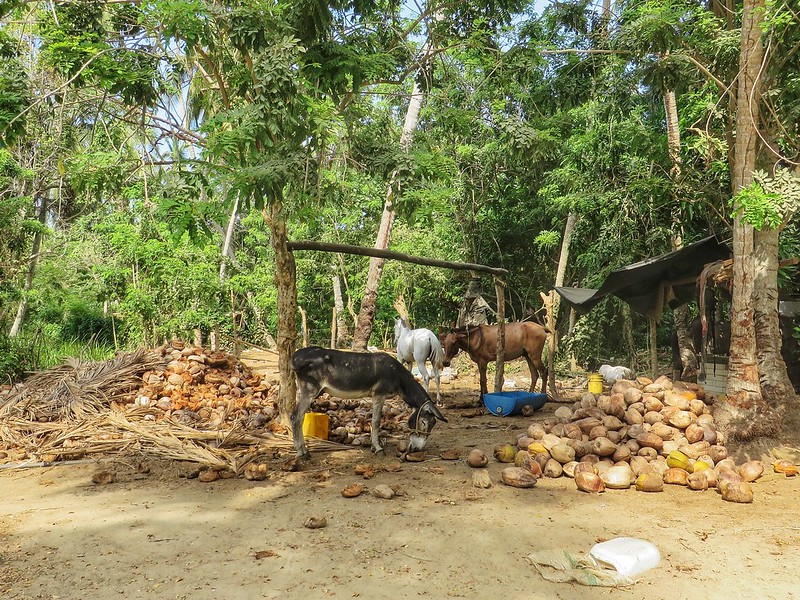
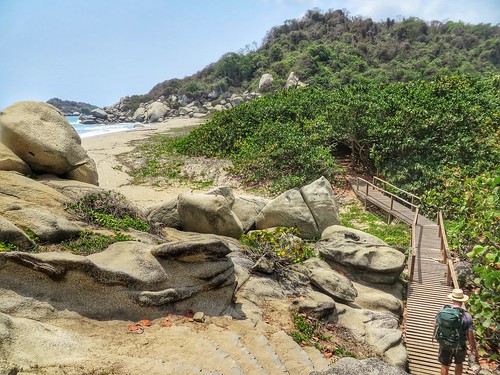
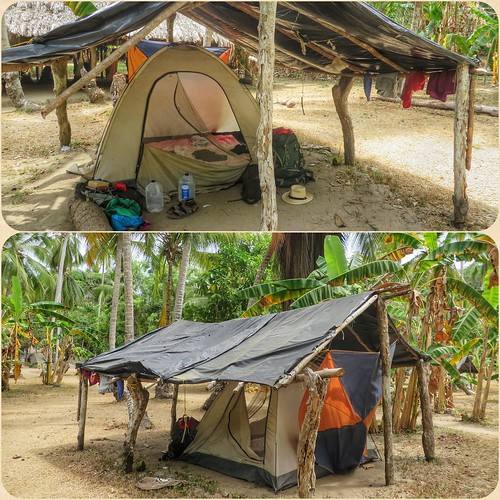

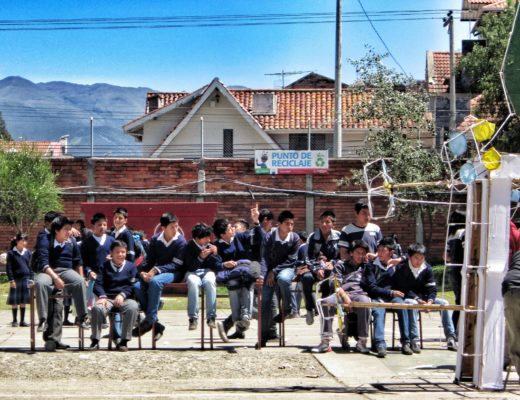
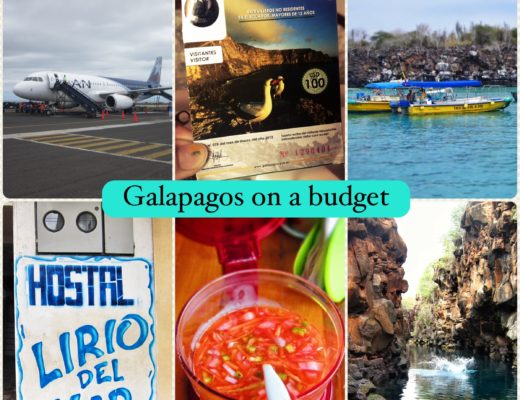
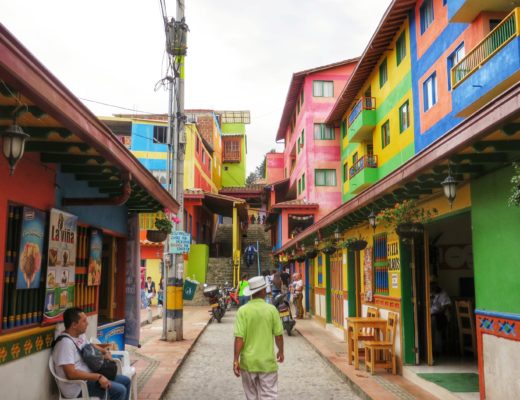
35 Comments
Naomi
May 22, 2014 at 8:12 amI never made it to Tayrona but I had a few stories along the same lines of the park being overhyped. La Guajira however is beautiful and worth the journey up there. Untouched paradise and cheap seafood, we ate like kings when we were there.
Dave
May 22, 2014 at 11:49 amOverhyped is exactly how I felt about Taganga! I only spent one night in Tayrona back in 2011, but it was enough to get the experience.
I remember some young backpackers had carried in food to cook, only to find out no campfires are allowed, and thus they had to plead with the kitchen to cook some of their food for them, lest it go to waste.
I also thought it was funny they carried in huge jugs of water (which is the same advice I think you’ll see in Lonely Planet), when you can just buy it in there. I knew the prices were high going in, so I just brought plenty of cash. I guess it depends on your approach. For me, I’d rather pay the high prices than lug the extra weight of food and water for a few hours down the beach.
Agree on La Guajira, I’m guessing tourism has grown there in the last three years, but due to the extra effort required to get to Cabo de la Vela, I’m sure it’s still far less visited than Tayrona.
Flora
June 2, 2014 at 4:34 pmI’m so glad you had the same reaction Dave! Yep, it was a bit of a struggle taking in so much water but we were determined not to get fleeced by the high prices so it was definitely worth it.
Flora
June 2, 2014 at 4:32 pmI know, I really wish I’d had time to get to La Guajira. Next time..!
Adam Pervez
May 22, 2014 at 3:24 pmI don’t remember if Tayrona cost 30K Pesos when I visited in late 2011, but the high cost must partly be attributed to having to bring in food and supplies by boat. Presumably meals on any of the Caribbean islands would be even more expensive, though I haven’t been to any.
Flora
June 2, 2014 at 4:35 pmThat’s a good point, Adam – and I can imagine it costs more on the islands too.
Sylvan
May 22, 2014 at 4:00 pmHey Flora,
Interesting take, though I couldn’t help but be surprised by some of the prices you guys had to pay! I remember getting hammocks for 15,000 ($7.50) with mosquito netting and we also didn’t need to carry in all our drinking water. In the end though, the food cost does build up 🙁
Also, tip for traveling students, if you have a student card, the entrance fee is only 4,000 ($2).
Flora
June 2, 2014 at 4:36 pmI’d forgotten about the student prices – thanks Sylvan! I guess it’s been too long since I was a student..
Tahlei
May 22, 2014 at 10:31 pmI was in Colombia over three years ago and after much deliberation decided not to visit Tayrona. Most of what we’d heard from other travelers was about the prices of getting there and getting in, as well as being eaten alive by mosquitoes. We were at the beginning of a 6 month trip and conscious of not spending up big right at the beginning, so we made the tough decision to skip it. As you say, there are loads of places in South America where you can get that beautiful, chilled out, beachy vibe, without feeling like you’re being ripped off.
I also grew up on near-perfect beaches in Australia so I am generally hard to please when it comes to coastline!
Flora
June 2, 2014 at 4:39 pmHaha, yeah – I can imagine that the Australian beaches are pretty hard to beat!
Darren
November 16, 2018 at 4:03 pmCan you recommend any alternatives? 🙁
Ekua
May 23, 2014 at 1:29 amI loved Tayrona! I didn’t spend the night there, though. I was staying at a comfortable hostel in Santa Marta with aircon, and sleeping in a sweaty hammock among jungle rats didn’t appeal to me. So I hiked in and out on the same day. I thought it was annoying how you had to pay for that shuttle to the beginning of the hike, but the high entrance fee didn’t bother me. I *hope* it goes toward maintaining the place. Anyway, I think doing it as a day hike really had a big impact on how much fun I had that day. I didn’t pay high prices for anything inside the park (but I did have to buy a ridiculously expensive bottle of water near the entrance) and I went so early that I had long stretches of solitude. I really enjoyed my experience simply for the hike and all the varied scenery along the way. I never went all the way to Cabo San Juan, I just found a tiny little beach a few kilometers away and it was really peaceful.
Flora
June 2, 2014 at 4:40 pmInteresting that you went to Tayrona for just a day, Ekua – I don’t think I would have been happy with doing that hike twice in the space of a day! But I can see the benefits to doing it that way.
Claire
May 23, 2014 at 9:11 pmI really enjoyed my day in Tayrona – we were there in February so it wasn’t too busy. Lunch was expensive so bring in your own snacks. For me the huge rocks were something I hadn’t seen before and I loved the hiking.
Flora
June 2, 2014 at 4:41 pmThe landscapes are definitely one of the highlights to a Tayrona visit!
Marcela
May 24, 2014 at 3:57 pmI’m soooo happy you’re having a blast in Colombia. I absolutely lived Tayrona and highly recommend it to travelers!! Right now I’m in Baghsu, India and found your blog by pure coincidence!…, or destined by the Universe. Enjoy your travels
Flora
June 2, 2014 at 4:42 pmAhh I loved Baghsu so much! Hope you’re having an incredible time up there 🙂 Safe travels to you too Marcela!
Dave Briggs
May 25, 2014 at 7:05 pmYou can’t fall in love with every place you visit, but you will certainly remember it, even if it is for the wrong reasons! Its a shame really… there are countless more chilled out places in Colombia for a fraction of the price, or free if you have your own gear.
Flora
June 2, 2014 at 4:43 pmVery true Dave – and I still really enjoyed my time in Tayrona, just not to the level I thought I would.
Jessica (Barcelona Blonde)
May 27, 2014 at 9:06 pmI’ve never been to Tayrona, but it sounds like they’ve really let tourism destroy what was originally wonderful about it. It’s a such shame when that happens to places. I guess once you’re in they can charge whatever they like.
It’s disappointing to hear stuff like this, but I definitely appreciate your honesty about it.
Flora
June 2, 2014 at 4:50 pmI do feel bad about my Tayrona-bashing because I really think it’s a lovely place – just that it doesn’t quite deserve so much hype in my opinion! I’m sure you’ll still have a great time there Jessica 🙂
The Spanish Challenge: Being a Journalist in Colombia
May 29, 2014 at 12:11 am[…] none of it really helped. I realised this when I went to the Caribbean coast for ten days with Josh: while it was easy enough to communicate with locals, I couldn’t shake […]
Katie @ The World on my Necklace
June 2, 2014 at 12:55 amWe also stayed at Don Pedro’s – what a joke that kitchen was! We did manage to cook all the food we bought in but it was definitely a mission! It is a shame that the food and very very basic accommodation is so overpriced because I do think that the landscape is pretty incredible. With the rugged beaches and jungled cliffs, it was unlike anywhere I had been before.
Flora
June 2, 2014 at 4:52 pmWell done for managing to actually cook there Katie! It was one of my more relief-filled moments when I saw it and knew that not bringing food in was the right idea..!
Katie @ The World on my Necklace
June 2, 2014 at 11:29 pmI admit I myself didn’t cook – I wouldn’t know where to start – it was my wonderful brother and boyfriend. Without them I would have been buying food too!
Flora
June 8, 2014 at 9:19 pmAha so you were treated to cooked food! Congrats 🙂
James
June 21, 2015 at 5:54 amPerhaps the food is expensive because the park is so remote and getting food into the park is also difficult for the people who work there (not just for the tourists on vacation in the park)? If that’s the case not sure if it’s fair to call that fleecing….
Flora
July 8, 2015 at 7:27 pmGood point, James – although I’m not sure how difficult it is to get food inside the park.
Sam
January 19, 2016 at 8:30 pmI remember the time in 1991, when I was visiting Tayrona. It was really a place to stay (what i did with 4 month 🙂 Just a dozen tourists belong the area. Some very nice fisher people (Flaco con su burro, Drago and the jealous Hernando…) – drinking some cold (!) beer with them, hanging around, smoothing coconuts, sleeping, relaxing – sometimes flying high. No plastics, no rubbish, just you and the nature around. Just Paradise!
Except: I remember 2 austrian boys. They died in the stormy sea because they was too high. No fisher who wants to save them – no boat that was ready for the heavy sea. The police comes with 2 “burros” that carries the dead bodies along the way. It was a little bit like in the movie “The Beach”. Extremly mystical, somehow unreal, and with it’s really big dangers with the sea, the drugs, the animals, and the jealous Hernando!
It hurts when i read the lines above… anyway: one time I go back to Colombia with its wonderful country and his wonderful people! Now, exactly 25 years later, there is still a small green and intensive place in my heart called Tayrona!
Have great trips and enjoy each moment travelling around and meeting nice people!
Karlie
January 4, 2019 at 3:07 amI appreciate your honesty in this post! I’m still deciding where I want to spend several days on the Caribbean coast, and I just may have to keep looking. Any recommendations for more chill beach towns within a couple hours of Cartagena?
Angelica
January 26, 2019 at 6:08 pmThat’s a good perspective to have in mind, but always a little sad when you make it to these hyped up places and they don’t hit it! Was there somewhere in Colombia that you had better experiences?
Frankie
January 26, 2019 at 7:43 pmI know so little about Colombia so honest posts like these are so useful!
Carly | FearlessFemaleTravels.com
January 26, 2019 at 9:28 pmWow! That’s a seriously expensive camping trip, especially considering its location. Can you recommend somewhere that feels like a better value?
Brianna | curioustravelbug
January 26, 2019 at 10:55 pmTheres so many over hyped places around the World, it’s great to get a bit of perspective on the reality on some of these places. It’s always a little bit disappointing when you start getting price gouged places. I want to hope that the money is going into protecting the landscape and conservation initiatives. Great post!
Victoria
January 27, 2019 at 4:51 pmLooks like a beautiful place, but it’s such a shame when prices are inflated just because you don’t have any other choice. I’d find it hard not let that dampen the experience too – definitely good to know and keep in mind!